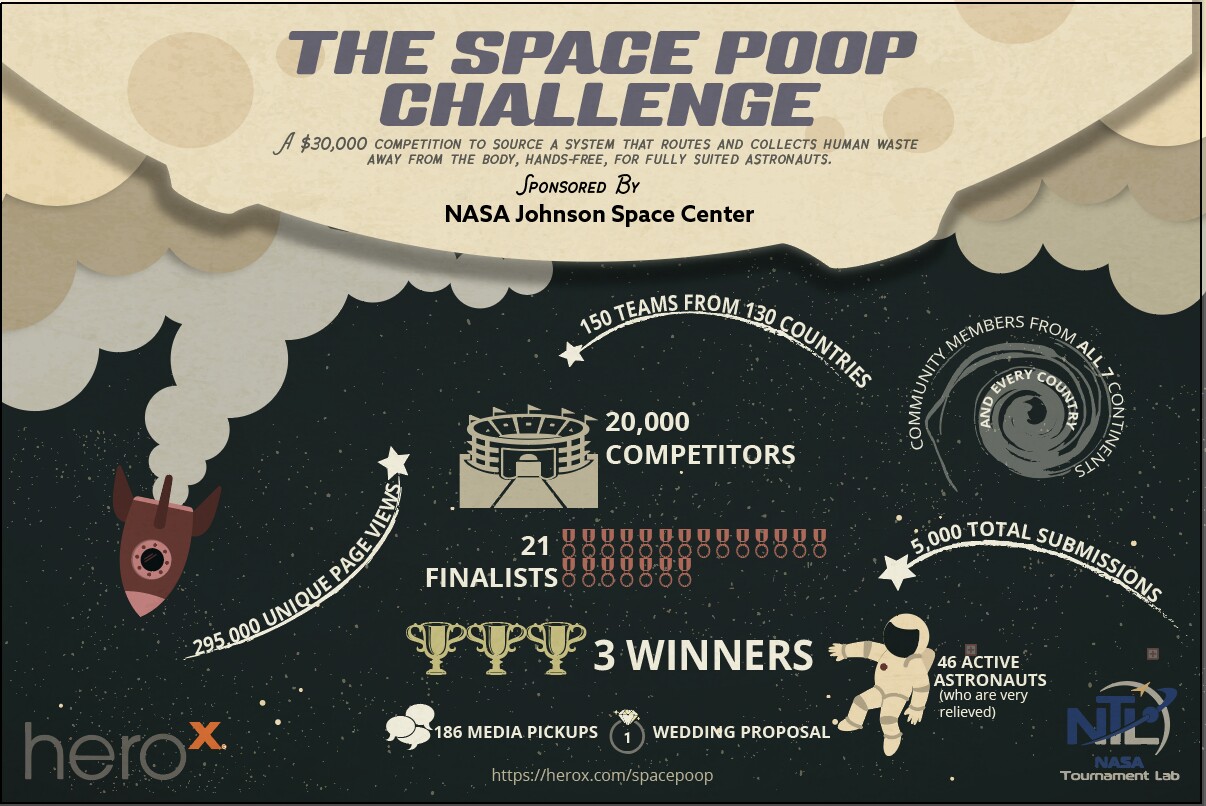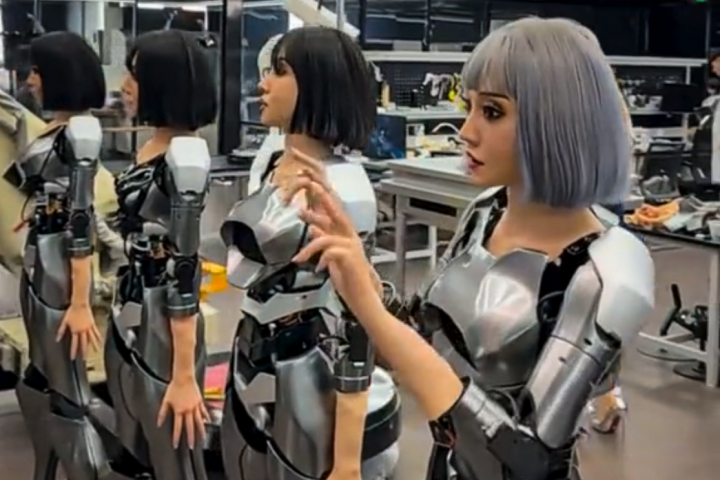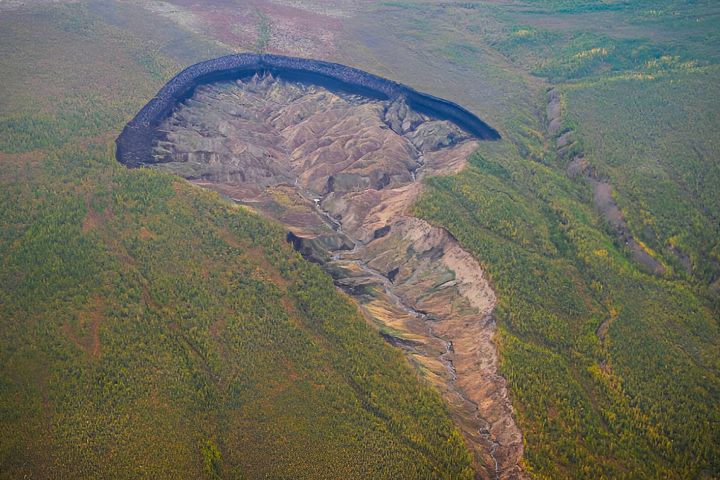For all the rockets that have been launched, you'd think that coming up with a solution to keep our literal crap together in space would be easy. It might not be rocket science, but it has apparently proven more difficult. Despite the technology at our disposal, astronauts have gone from doing their number twos in plastic bags (a practice that resulted in the now legendary floating turd incident of the Apollo 10 mission), to wearing adult diapers … and that's it. NASA has decided this will not do, not if we are serious about going to Mars.
Since many heads are better than a few, last October the space agency invited people from all around the world to take part in the Space Poop Challenge. The mission: to design a hands-free, gender-neutral waste management system for use inside a spacesuit that would take care of bodily waste matter in a microgravity environment. In particular, the design is intended for use in emergencies, and since the life support systems in spacesuits protect astronauts from such dangers as a loss of cabin pressure inside the spacecraft, astronauts would have to be able to access the proposed waste management system without opening the suit – in worst-case scenarios, for as long as six days.
"Now that NASA is going beyond low-Earth orbit into lunar orbit and beyond, we have to figure out ways to keep astronauts alive and healthy for many days after a major malfunction, such as loss of vehicle pressure," explains NASA astronaut Richard Mastracchio, adding that improper treatment and disposal can lead to infection and even death.
The Extravehicular Mobility Unit (EMU) that was used on the Space Shuttle and International Space Station Missions currently uses an adult diaper to collect waste. This is suitable for short missions lasting no more than one day, however deep space missions are another matter altogether.
"We're looking for a solution that will be included on the vehicle for upcoming manned Orion missions," NASA spacesuit engineer Kristyn Johnson told Space.com. "EM-2 (or Exploration Mission 2, which is set to be the first crewed mission of the Orion spacecraft) will be the first flight of a long duration waste management device. There is a possibility that it could be a part of a future Mars trip timeline, but we're not focused on that aspect right now."
Over the course of 60 days, the global crowdsourcing challenge drew more than 5,000 ideas from more than 150 teams across the world.

Here are the three winning entries:
First Prize (US$15,000): MACES Perineal Access & Toileting System (M-PATS)
Inspired by minimally invasive surgical procedures, such as laparoscopy and arthroscopy, the M-PATS features a small airlock in the crotch of the suit that is designed to open without depressurizing the suit, and allow a variety of objects, including inflatable bedpans, a water-spraying bidet and cleaning wand to pass through it. According to the designer, Thatcher Cardon, a family physician and flight surgeon, the opening even allows users to change their underwear.
"I never thought that keeping the waste in the suit would be any good," he said in an interview with US radio station NPR. "I thought about what I know regarding less invasive surgeries like laparoscopy or arthroscopy or even endovascular techniques they use in cardiology – they can do some amazing things in very small openings."
Second Prize ($10,000): Air-powered Spacesuit Waste Disposal System
Designed by a trio of doctors and engineers who call themselves Space Poop Unification of Doctors (SPUDs), this girdle-like device makes use of an air-powered system to direct waste away from the body via an exit tube so that it can be dried and sanitized prior to removal.
Third Prize ($5,000): SWIMSuit - Zero Gravity Underwear for Six-Day Use
British designer Hugo Shelley sought to keep things as simple as possible to minimize complications in space. His bicycle shorts-meets-external catheter invention also comes with a mechanism that separates and sanitizes waste.

"The ability to protect the crew while in a pressurized suit for such an emergency situation is one that has never before been tested in space and is critical for crew health," says Johnson. "It was invigorating to see the number of people interested and engaged in the challenge. From here, we'll be able to use aspects of the winning designs to develop future waste management systems for use in the suit."
Astronaut Richard Mastracchio outlines the importance of finding a better way to deal with human waste in space in the video below.






